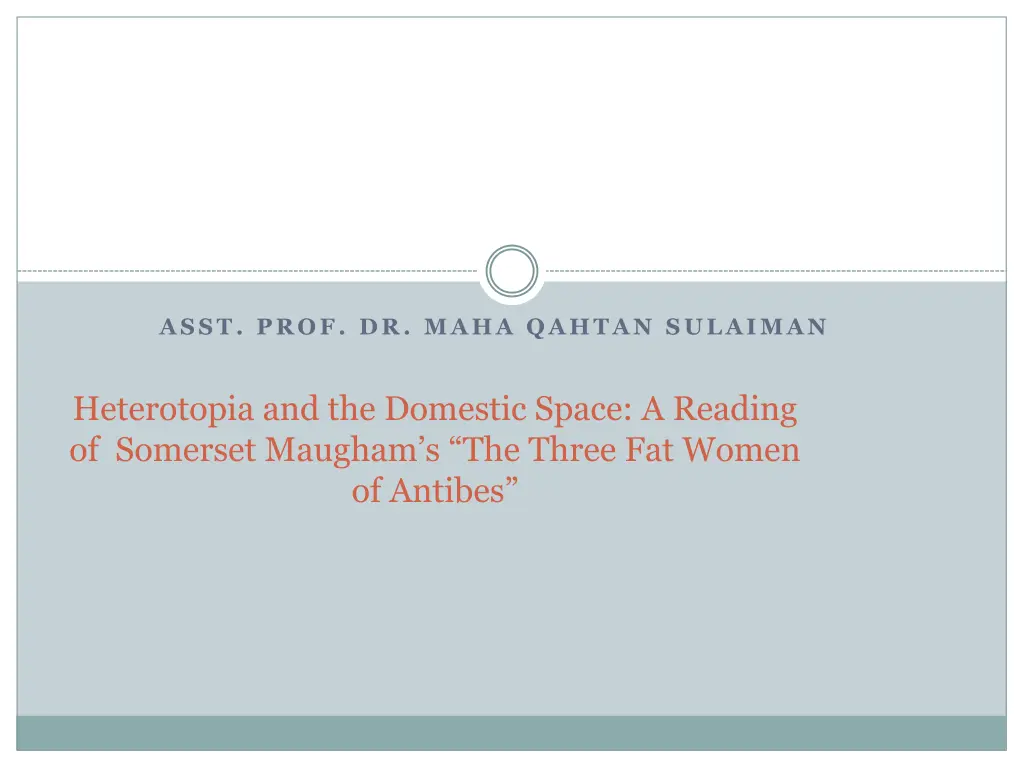
Exploring Heterotopia in Somerset Maugham's 'The Three Fat Women of Antibes'
Delve into the concept of heterotopia within the domestic space as portrayed in Somerset Maugham's work, 'The Three Fat Women of Antibes'. Analyzing the characters of Mrs. Richman, Mrs. Sutcliffe, and Miss Hickson, we uncover unique insights into widowhood, divorce, and spinsterhood. Join us on this literary journey where food becomes a symbol of life's worthiness.
Download Presentation

Please find below an Image/Link to download the presentation.
The content on the website is provided AS IS for your information and personal use only. It may not be sold, licensed, or shared on other websites without obtaining consent from the author. If you encounter any issues during the download, it is possible that the publisher has removed the file from their server.
You are allowed to download the files provided on this website for personal or commercial use, subject to the condition that they are used lawfully. All files are the property of their respective owners.
The content on the website is provided AS IS for your information and personal use only. It may not be sold, licensed, or shared on other websites without obtaining consent from the author.
E N D
Presentation Transcript
ASST. PROF. DR. MAHA QAHTAN SULAIMAN Heterotopia and the Domestic Space: A Reading of Somerset Maugham s The Three Fat Women of Antibes
One was called Mrs. Richman and she was a widow. The second was called Mrs. Sutcliffe; she was American and she had divorced two husbands. The third was called Miss Hickson and she was a spinster.
But if Im never to eat a thing I like, life isnt worth living.
